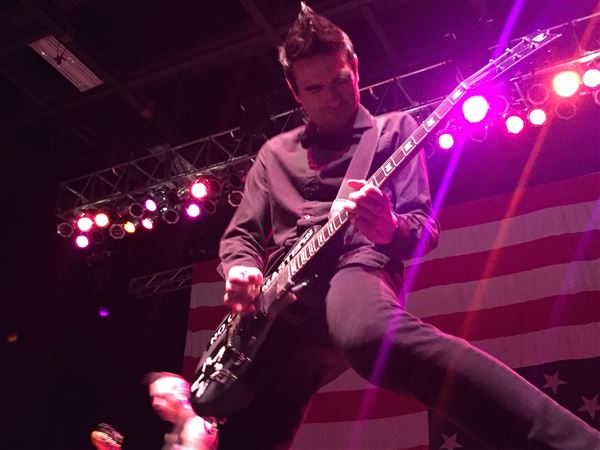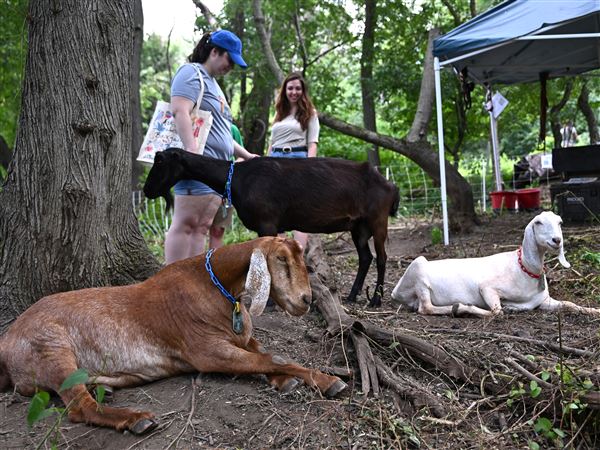FLORIDA CITY, Fla. -- The Everglades can be a surprisingly noisy place.
There were the strange, catlike sounds from the small heron sitting in a tree. Earthshaking burps could be heard from unseen Southern bullfrogs or pig frogs. There was an occasional roar that we knew came from, yes, the dark-colored alligators along the Anhinga Trail. Some were sunning themselves and some were swimming in the freshwater pools.
Everglades National Park is a big, flat, swampy and often buggy place. It covers 1.5 million acres at the southern tip of Florida, only one hour from downtown Miami.
The exotic waterscape is a soggy terrestrial park. It features a subtle landscape with open grassy vistas, strange rocky pinelands and dense islands of hardwoods. The park is a rich and diverse biological preserve.
Everglades is not an easy place to know or love. It can be inhospitable, a less-than-glamorous vacation spot, as well as home to killer mosquitoes and smothering summer humidity and rains.
The area is the largest subtropical wilderness in the United States and the country's third-largest national park in the lower 48 states: behind Death Valley and Yellowstone.
It was created in 1947 to save a portion of the threatened Everglades.
The park gets about 1.5 million visitors a year, mostly in the drier, cooler winter months. Yet it remains the most-threatened American national park.
It is a place filled with more than 10,000 freshwater-loving alligators and a few hundred saltwater-loving crocodiles, along with deer, black bears, dolphins, manatees, sharks, snakes, turtles and the seldom-seen Florida panther, an endangered species.
Colorful birds abound, many long-legged waders: pelicans, egrets, cranes, herons, ibises, flamingos, roseate spoonbills, storks, frigate birds, kites, skimmers, hawks, eagles and the ever-present black vultures.
The Calusa Indians called it "Pa-hay-okee," or the land of grassy water. It is a land of saw-grass prairies, freshwater sloughs, scrub prairies, cypress swamps, mangrove thickets, saltwater lakes, miniature forests, brackish estuaries and sandy beaches. Lush tree islands with pines, mangroves and mahogany trees thrive on limestone mounds.
The Everglades is home to 1,000 species of plants, 350 bird species, 200 fish species and 120 tree species. It is also under attack from invasive species of plants and animals.
Known for its stunning sunsets, the Everglades is the largest saw-grass prairie in North America, the largest mangrove swamp in the Western Hemisphere and the largest designated wilderness in the southeastern United States.
It is home to 14 threatened or endangered species and the largest breeding ground for tropical wading birds in North America.
The Everglades is a designated World Heritage Site, an International Biosphere Reserve and a Wetland of International Importance.
It is buffered by Biscayne National Park, Big Cypress National Wildlife Refuge and the Florida Keys National Marine Sanctuary.
Yet the Everglades is a ghost of what it once was. It has shrunk by 50 percent and its birds have declined by 90 percent since 1900. The extravagant abundance of species that once thrived in the Everglades is missing. Nonetheless, the Everglades is still an impressive place.
It is a fragile environment for a place so vital, so lively, so complex, so primeval, so sprawling.
Water is at the center of the Everglades' needs and threats to the park, which is suffering from a major drought.
The Everglades needs fresh water to survive and so, too, do the rapidly growing urban centers in South Florida and Florida's agribusiness.
Florida began in 1905 to drain the Everglades, deemed a "worthless swamp" by Gov. Napoleon Bonaparte Broward.
The park's main natural feature is known as the River of Grass and was described in the 1940s by conservationist Marjory Stoneman Douglas.
The giant south-flowing stream is 50 miles wide with 1 to 3 feet of water in its main slough but only 6 inches deep elsewhere. It flows a quarter mile per day.
The water flow to the Everglades begins on winding Kissimmee River near Orlando. It then spills into Lake Okeechobee in central Florida before it empties into the River of Grass and continues flowing southward to Florida Bay and the Gulf of Mexico.
In 1996, Congress authorized a 30-year, $8.6 billion plan to return water in more natural patterns of quantity, timing and distribution throughout South Florida, although that restoration effort languishes.
There are really four Everglades to visit from three spread-out entrances:
 Shark Valley, with tram rides through the saw grass to view birds and alligators in the northeast corner.
Shark Valley, with tram rides through the saw grass to view birds and alligators in the northeast corner.
 Ten Thousand Islands, with its mangrove estuary in the northwest.
Ten Thousand Islands, with its mangrove estuary in the northwest.
 The 38-mile road from Florida City to Flamingo, with its saw grass, cypress swamps and hardwood hammocks.
The 38-mile road from Florida City to Flamingo, with its saw grass, cypress swamps and hardwood hammocks.
 The Flamingo area, with its coastal prairies.
The Flamingo area, with its coastal prairies.
Flamingo, at the southern end of the park road, was settled in the late 1800s by fishermen, plume hunters and moonshiners.
About one-third of the park lies in and under Florida Bay, with its coves, beaches and islets.
One of the best ways to see the Everglades is by boat. There are narrated boat tours of the pristine Ten Thousand Islands, with its coastal mangrove swamps, and in the Flamingo area. Kayak, canoe and boat rentals are available.
The 99-mile Wilderness Waterway is a back-country route that runs along the park's western edge from Everglades City to Flamingo. It can be traversed in motor boats in six hours or in seven to nine days by canoe or kayak. Boaters can camp at 47 sites along the route -- on sandy spits and on chickees, or wooden platforms on pilings above the water.
The National Park Service recommends taking short hikes along the Anhinga and Gumbo Limbo trails near the Royal Park Visitor Center; Mahogany Hammock, with its giant trees at the edge of the River of Grass; and Long Pine Key, with its slash pines, saw palmettos and hardwoods with seven miles of trails.
The Anhinga Trail -- named for the long-necked bird that spears fish with its beak -- stretches a half-mile on a boardwalk over Taylor Slough. The birds nest along the trail above the alligators.
The nearby Gumbo Limbo Trail runs a half mile through a hardwood hammock with peeling red-barked gumbo-limbo trees, strangler figs, poisonwood and other tropical trees.
Visitors are also encouraged to join in ranger-led walks and programs. That's one of the best ways to assure seeing the most and best wildlife.
Slogging is one of the recommended activities in the Everglades park. That's the term given to cross-country foot travel through the wetlands, a form of transportation that will not appeal to most people.
Be aware that scenery and wildlife viewing varies, sometimes dramatically, with water levels. Traditionally, water levels are highest in the summer because of afternoon thunderstorms from May through October and some parts of the park may be inaccessible.
The only lodging in the park is at Flamingo, with 74 rooms, although additional lodging is found outside the park.
The Everglades park operates five visitor centers.
Outside the park, you can take airboat and swamp buggy rides on adjoining wetlands, but those activities are banned inside the park.
There are campgrounds in the park at Flamingo and Lone Pine Key.
The park entrance fee is $10 per vehicle.
For park information, write to Everglades National Park, 40001 State Route 9336, Homestead, FL 33034; 305-242-7700; or go to www.nps.gov/ever.
For lodging information, contact the Flamingo Lodge, Marina and Outpost Resort, Flamingo, FL 33030; 800-600-3813 or 239-695-3101; www.flamingolodge.com.
For Shark Valley tram tours, call 305-221-8455 or check www.sharkvalleytramtours.com. For boat tours on the Gulf of Mexico side at Everglades City, write to Everglades National Park, Boat Tour Concession, P.O. Box 120, Everglades City, FL 34139; 239-695-2591.
Outfitters in nearby towns also offer an array of excursions through the Everglades.
For Florida travel information, call 888-735-2872 or see www.visitflorida.com.
First Published: July 6, 2007, 12:30 p.m.














